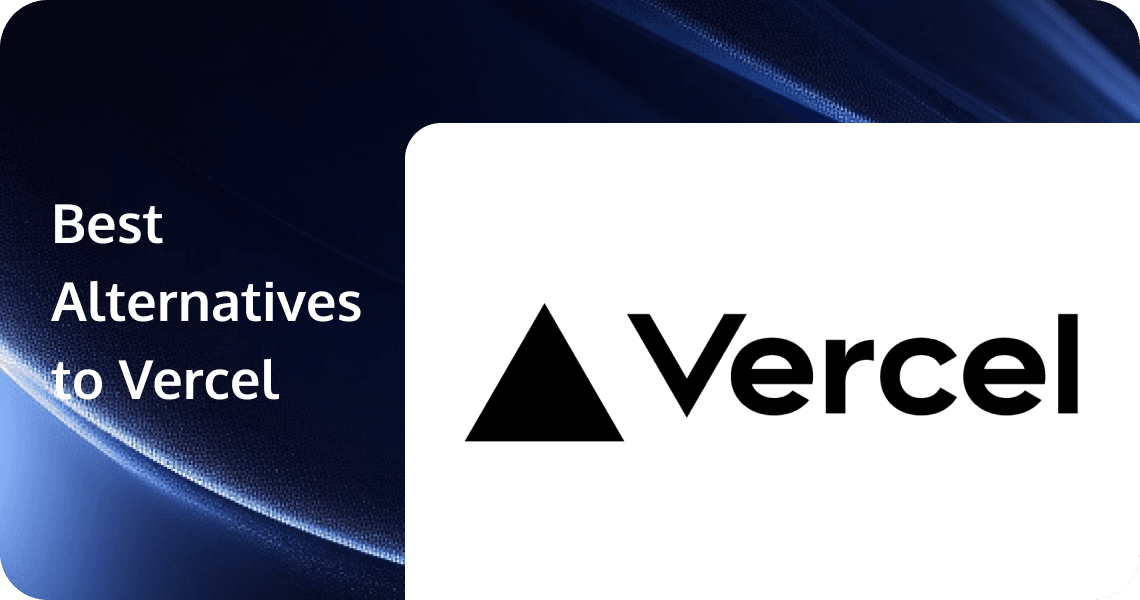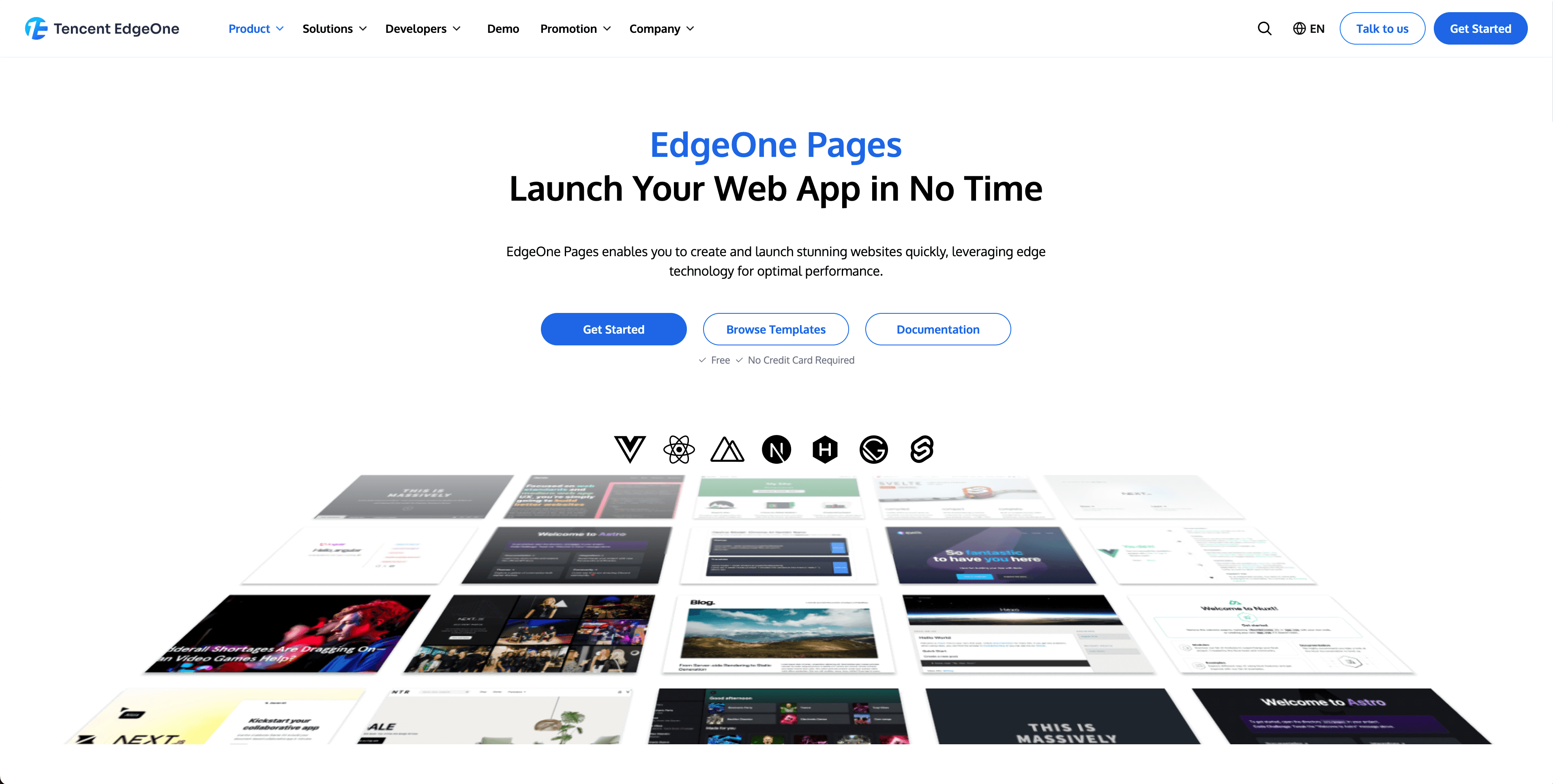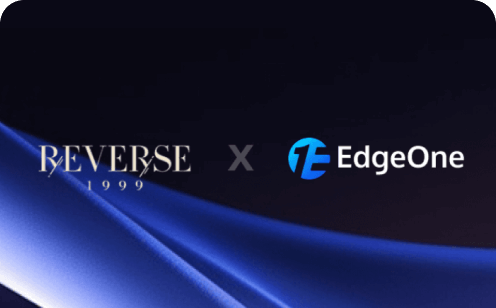Top 10 Vercel Alternatives for Modern Web Deployment in 2025

Vercel has become a household name among developers for its seamless deployment process and powerful features. However, as the web development landscape evolves, numerous other platforms offer compelling alternatives to Vercel. Whether you're looking for faster deployments, more scalable solutions, or a different set of features, this article explores the top 10 platforms that can meet your needs. From static site hosting to full-stack development, these alternatives provide a range of options to fit any project.
What is Vercel?
Vercel is a cloud platform designed specifically for developers to deploy modern web applications and static sites with ease. It has gained significant popularity in the development community due to its seamless integration with popular frameworks like Next.js, React, and Vue.js. Vercel's primary focus is on providing a developer-friendly experience that simplifies the deployment process while ensuring high performance, scalability, and reliability.
Key Features of Vercel
- Seamless Deployment: Vercel integrates directly with your Git repositories, allowing for automated deployments with every push to your main branch. This feature ensures that your application is always up-to-date with the latest code changes.
- Global CDN: Vercel leverages a global Content Delivery Network (CDN) to deliver your content quickly and efficiently to users around the world. This ensures low latency and fast load times, which are crucial for a good user experience.
- Serverless Functions: Vercel supports serverless functions, enabling you to run backend code without managing servers. This is particularly useful for handling API requests, database interactions, and other backend logic.
- Edge Network: Vercel's edge network allows you to run your code closer to your users, reducing latency and improving performance. This is especially beneficial for applications that require real-time processing.
- Automatic SSL: Vercel automatically provisions and renews SSL certificates for your domains, ensuring that your site is secure and trusted by users.
- Custom Domains: You can easily configure custom domains with Vercel, allowing you to use your own domain name for your application.
- Developer-Friendly Tools: Vercel provides a range of developer-friendly tools, including a powerful CLI, detailed logs, and analytics to help you monitor and manage your deployments.
Why Developers Love Vercel
- Ease of Use: Vercel's intuitive interface and seamless Git integration make it incredibly easy to deploy and manage applications. Developers can focus on writing code rather than worrying about the deployment process.
- Performance: With its global CDN and edge network, Vercel ensures that your application is fast and responsive, regardless of where your users are located.
- Scalability: Vercel automatically scales your application based on traffic, ensuring that it can handle sudden spikes in usage without any manual intervention.
- Community and Support: Vercel has a strong community of developers and provides excellent support through its documentation, forums, and customer service.
Use Cases for Vercel
- Static Sites: Vercel is ideal for deploying static sites built with modern frameworks like React, Vue.js, and Angular. Its global CDN ensures that your site loads quickly and efficiently.
- Full-Stack Applications: With support for serverless functions and backend services, Vercel can also handle full-stack applications. This makes it a versatile platform for both frontend and backend development.
- Microservices: Vercel's serverless architecture is well-suited for deploying microservices, allowing you to build scalable and modular applications.
Vercel has become a go-to platform for developers due to its ease of use, powerful features, and strong performance. However, as we explored in the previous sections, several other platforms offer compelling alternatives with their unique strengths. Understanding what Vercel is and what it offers can help you make a more informed decision when choosing the right deployment platform for your needs.
Top 10 Vercel Alternatives
1. EdgeOne Pages

- Overview: EdgeOne Pages is a modern web development and deployment platform built on the Tencent EdgeOne infrastructure. It is designed to help developers quickly build and deploy static sites and serverless applications. By integrating edge computing capabilities, it ensures efficient content delivery and dynamic feature expansion, supporting fast access for global users.
- Key Features:
- Global Acceleration: Leverage Tencent Cloud's global distribution network to cache static resources at edge nodes closest to users, ensuring smooth experiences and enhanced website performance.
- Edge Serverless: Write ultra-low latency server-side logic in JavaScript at edge nodes without configuring or managing servers.
- Automated Deployment: Integrate with Git repositories (e.g., GitHub, GitLab) to automatically build and deploy your site with every code commit.
- Full-Stack Development: Support for dynamic applications using edge functions (Pages Functions) and KV storage, enabling lightweight dynamic services without traditional servers.
- Free and Stable Service: During the public beta, all features are fully available with no restrictions, providing a free and stable service.
- Best For: Static and dynamic website hosting, full-stack project development, and developers looking for a fast, scalable, and cost-effective solution with strong support for the Asia market.
- Pricing: Currently in public beta with a free tier offering unlimited access to all features.
- Link: 🔥 Deploy for free
2. Netlify
- Overview: Netlify is a powerful serverless platform known for its intuitive Git-based workflow. It has become a favorite among developers for its ease of use and robust feature set.
- Key Features:
- Automated deployments directly from your Git repository.
- Global CDN integration for fast content delivery.
- Serverless functions to handle backend logic without managing servers.
- Built-in form handling and A/B testing capabilities.
- Best For: Static sites and modern app deployment using the JAMstack architecture.
- Pricing: Free tier available. Pro plans start at $19/member/month, with additional features and custom pricing for enterprise users.
3. Render
- Overview: Render is a unified platform that simplifies the process of building and running full-stack applications. It offers a range of features that make it an excellent alternative to Vercel.
- Key Features:
- Automatic deployments from Git repositories.
- Private networking for secure communication between services.
- Managed PostgreSQL databases for backend needs.
- Best For: Full-stack web applications, Node.js projects, and apps that require both frontend and backend components.
- Pricing: Hobby tier is free. Professional plans start at $19/user/month, with additional options for organizations and custom enterprise solutions.
4. DigitalOcean App Platform
- Overview: DigitalOcean's App Platform is a PaaS that simplifies deploying and scaling applications. It offers a balance of ease of use and control over your infrastructure.
- Key Features:
- Automated deployments and scaling.
- Serverless architecture for cost-effective resource management.
- Managed databases and one-click integrations.
- Best For: Developers who need complete control over their servers while still benefiting from automated deployment and scaling.
- Pricing: Free tier available. Droplets start at $4/month, with Kubernetes plans starting at $11/month.
- Ratings: G2 - 4.6/5.
5. AWS Amplify
- Overview: AWS Amplify is a cloud-based development platform that provides a comprehensive suite of tools for building and hosting full-stack applications.
- Key Features:
- Managed hosting with a global CDN.
- Robust authentication and authorization features.
- Feature flags for managing releases and experiments.
- Real-time user dashboard for monitoring and analytics.
- Best For: Teams already invested in AWS or those requiring deep backend functionality.
- Pricing: Free for the first 12 months, with pay-as-you-go pricing for additional features.
6. Firebase Hosting
- Overview: Firebase Hosting is part of Google's Firebase platform and offers fast, secure hosting for web apps and static content.
- Key Features:
- Global CDN for fast content delivery.
- Automatic SSL certificates and custom domain support.
- Versioning and release management.
- Integration with other Firebase services like Firestore and Authentication.
- Best For: Developers already using other Firebase services or those looking for seamless scalability.
- Pricing: Free tier available, with additional features requiring a subscription.
7. Fly.io
- Overview: Fly.io is a platform for deploying containerized apps globally, offering low-latency and high-performance infrastructure.
- Key Features:
- Managed containers and Kubernetes for scalable deployment.
- Persistent storage for stateful applications.
- Fly Proxy for load balancing and high availability.
- Low-latency regions for real-time applications.
- Best For: Low-latency apps, real-time systems, and projects that need server-side rendering or persistent storage.
- Pricing: $5 free trial credit. Hobby plans start at $5/month, with pay-as-you-go pricing and dedicated support starting at $29/month.
8. Heroku
- Overview: Heroku is a cloud platform as a service (PaaS) that supports several programming languages and offers a developer-friendly interface.
- Key Features:
- Easy deployment from Git repositories.
- Wide language support, including Node.js, Ruby, Python, and more.
- Marketplace for add-ons like databases, monitoring tools, and more.
- Best For: Quick deployment of backend-heavy applications and microservices.
- Pricing: Free tier available, with additional features requiring a subscription.
9. Surge
- Overview: Surge is a static web publishing tool designed for Front-End Developers. It allows for quick and easy deployment of static sites directly from the command line.
- Key Features:
- Single-command deployment from the CLI.
- Custom domain support and HTTPS.
- Global CDN for fast content delivery.
- Best For: Developers looking for a quick and easy way to deploy static sites.
- Pricing: Free tier available.
10. Kinsta
- Overview: Kinsta is a hosting platform optimized for modern web apps and sites, with a focus on performance, security, and scalability.
- Key Features:
- High-performance infrastructure with a global CDN.
- Enhanced security features and DDoS protection.
- Optimized for WordPress sites and modern web applications.
- Best For: WordPress sites and modern web applications that require high performance and security.
- Pricing: Various plans are available to suit different needs.
How to Choose the Right Vercel Alternative
When selecting a deployment platform, consider these key factors:
- Project Type: Static site, SPA, or full-stack application
- Framework Compatibility: Specific optimizations for your framework (React, Vue, etc.)
- Budget Constraints: Free tier requirements or expected scaling costs
- Technical Requirements: Serverless functions, databases, or specialized services
- Team Familiarity: Existing knowledge within your team
- Scale Expectations: Traffic patterns and global audience needs
- Integration Requirements: CI/CD pipelines and third-party services
Why Choose EdgeOne Pages?
- Superior Performance in Asia: With over 2500 nodes in Asia and 3200 globally, EdgeOne Pages offers significantly better performance compared to competitors like Vercel and Cloudflare Pages, especially in the Asia market.
- Edge Computing Capabilities: Supports edge functions and KV storage, enabling dynamic content delivery and serverless architecture.
- Developer-Friendly: Automated CI/CD, Git integration, and CLI tools make deployment and management straightforward.
- Future-Proof: Ongoing development of advanced features like edge AI model inference, positioning it at the forefront of web application deployment technology.
Migration Strategies for Vercel Alternatives
Moving from Vercel to another platform requires careful planning:
1. Audit Your Application
- Document dependencies, environment variables, and build settings
- Identify Vercel-specific features you're using
2. Prepare Your Repository
- Update configuration files for the new platform
- Document deployment steps for team members
3. Test in Parallel
- Deploy to both platforms simultaneously during transition
- Compare performance and functionality
4. Update DNS Gradually
- Use percentage-based traffic shifting if available
- Monitor errors and user experience metrics
5. Common Challenges and Solutions
- Serverless function adaptation (check for syntax differences)
- Environment variable migration (secure transfer)
- Build command adjustments (platform-specific optimizations)
- Custom domain configuration (DNS verification methods may differ)
Conclusion
Choosing the right deployment platform is crucial for the success of any web development project. While Vercel is a popular choice, the alternatives listed above offer unique strengths and features that may better suit your specific needs. Whether you prioritize ease of deployment, scalability, or cost-effectiveness, there is a platform on this list that can meet your requirements. Consider your project's needs and budget carefully to select the best fit for you.

